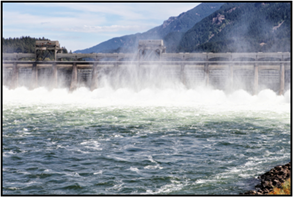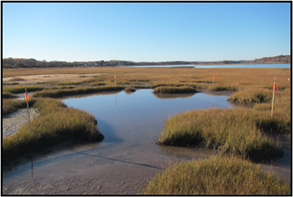The U.S. Army Corps of Engineers (USACE) faces critical challenges, including aging infrastructure and a changing environment and climate. USACE solves these challenges through innovation in science, engineering and technology to ensure the resilience of the nation’s infrastructure and water resources. This Strategy outlines the USACE Civil Works (CW) Research, Development and Technology (RD&T) framework, focusing on innovation, collaboration and practical solutions. Using phases of the Technology Innovation Strategy (TIS) — Discover, Develop, Deliver, Sustain and Connect — USACE aims to meet current needs and prepare for future challenges, enhancing the nation’s water resources, enabling economic growth and promoting public safety.
The CW RD&T Strategy addresses grand challenges with innovation across six Strategic Focus Areas (SFAs):
 INFRASTRUCTURE: Years of deferred construction and maintenance have created backlogs approaching $200 billion. Maintaining and replacing aging infrastructure requires transformative technologies that enable more cost-effective, resilient and reliable solutions, including ultra-durable and rapid construction materials and processes, models that predict performance and optimize maintenance, and autonomous inspection techniques.
INFRASTRUCTURE: Years of deferred construction and maintenance have created backlogs approaching $200 billion. Maintaining and replacing aging infrastructure requires transformative technologies that enable more cost-effective, resilient and reliable solutions, including ultra-durable and rapid construction materials and processes, models that predict performance and optimize maintenance, and autonomous inspection techniques.

WATER MODELING: U.S. damages from inland and coastal flooding and tropical cyclones have risen from $6.5 billion annually in the 1980s to $83 billion per year from 2020-2024. To manage this growing risk, USACE needs a unified framework for evaluating flood hazards across the continent. This framework will use advanced remote and space-based observations, modeling of atmospheric and coastal processes, and AI to integrate simulation and observation data. It will assess the lifecycle performance of water systems, including nature-based and traditional solutions, and enhance forecasting and post-crisis impact in arid regions.

CRISIS PREPAREDNESS: Man-made and natural hazard events stress the operational capability of national infrastructure and drive costly response and recovery activities. USACE planners need improved hazard models and advanced methods to rapidly collect and analyze data for systems-level understanding of potential vulnerabilities and risks of cascading failures. Advanced decision support tools inform preparedness and optimize investments and mitigation efforts before an event occurs. Modernizing through robotics, autonomy and AI will ensure continuity of operations, swiftly and safely restore full capability, and safeguard supply chain logistics.

DATA, AI AND ROBOTICS: Solving the most complex Civil Works problems requires leap-ahead capabilities, such as machine learning and artificial intelligence, to enable rapid risk-informed decision making. This area will combine sensor data with big data analytics, integrate disparate models, and enable trade-space analytics to optimize designs and operations. The result will be a dashboard to evaluate the impacts of alternatives, as well as a “systems-of-systems” approach to evaluate benefits across USACE’s complex water resource missions.

ECOSYSTEMS: USACE spends over $500M annually on aquatic ecosystem restoration and nearly $1B in five years managing invasive species like Harmful Algal Blooms and invasive carp. Additionally, $2B was spent over 10 years to comply with the Endangered Species Act and support species recovery, such as the Interior Least Tern and Pallid Sturgeon. Sustainable restoration, invasive species management, and species protection are vital to address environmental challenges. Developing advanced sensors, data analytics, and ecological modeling tools will improve mission readiness by accelerating environmental decisions and supporting ecosystem health.

SEDIMENT MANAGEMENT: Leap-ahead construction and operation technologies are needed to reduce USACE dredging costs that currently exceed $1 billion annually. Next generation sensors, advanced modeling and increased public-private partnerships can spark greater efficiencies. Meanwhile, dredged sediment must be strategically placed to deliver flood risk management, navigation and environmental benefits such as flood risk reduction, healthier wetlands and more sustainable river and coastal shorelines and habitats. Partnering is essential to achieving these goals.